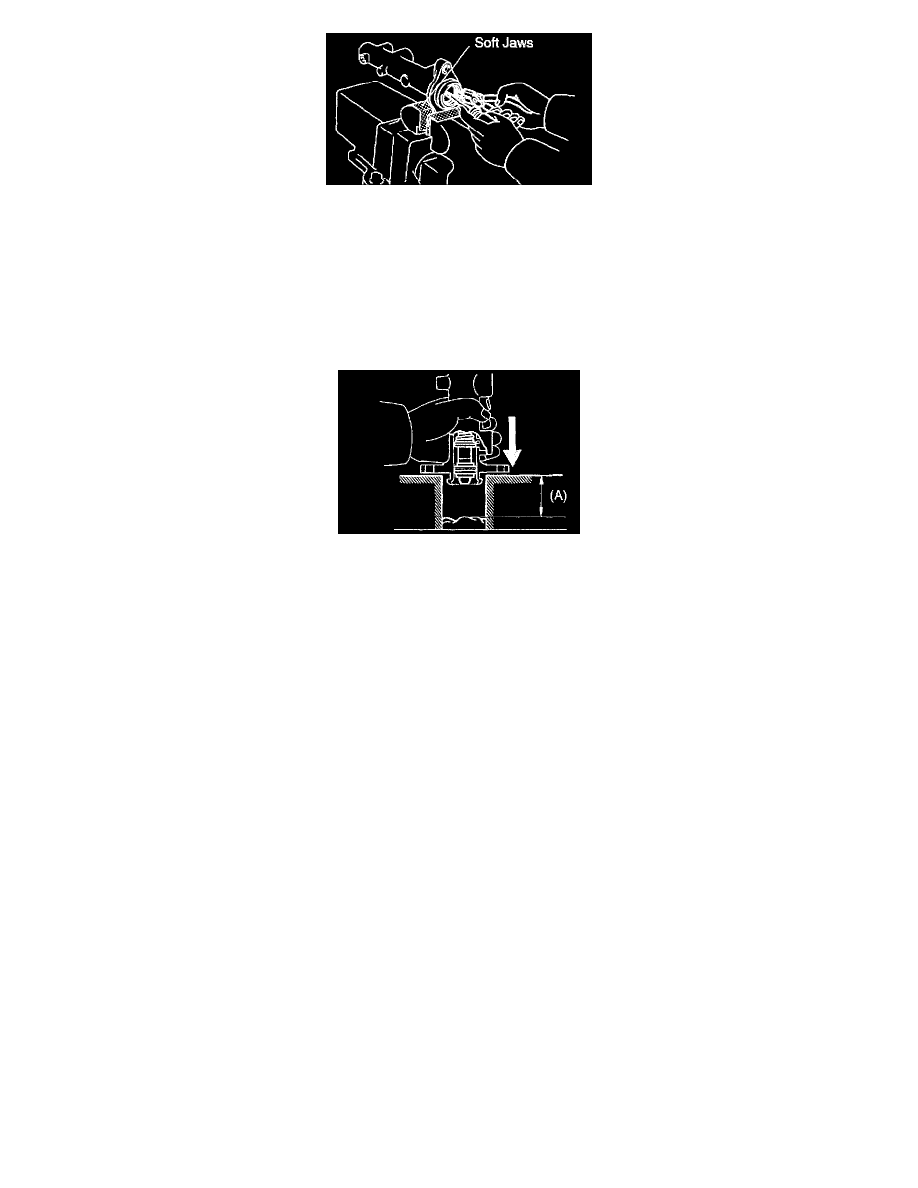Camry XLE Sedan 4-Door L4-2164cc 2.2L DOHC MFI (1997)

a. Push in the piston with a screwdriver and remove the snap ring with snap ring pliers.
NOTE: Tape the screwdriver tip before use.
b. Remove the No.1 piston and spring by hand, pulling straight out, not at an angle.
CAUTION:
-
If pulled out and installed at an angle, there is a possibly that the cylinder bore could be damaged.
-
Be careful not to damage the rubber lips on the pistons.
c. Place a rag and 2 wooden blocks on the work table, and lightly tap the cylinder flange against the block edges until the No.2 piston drops out
of the cylinder.
NOTE: Make sure that the distance (A) from the rag to the top of the blocks is at least 100 mm (3.94 inch).
INSPECTION
1. Inspect cylinder bore for rust or scoring.
2. Inspect cylinder for wear or damage.
NOTE:
-
If necessary, clean or replace the cylinder.
-
Clean the disassembled parts with compressed air.
ASSEMBLY
Assembly is in the reverse order of disassembly noting the following:
-
Torque set screw to 1.7 Nm (16 in. lbs.)
-
Torque piston stopper bolt to 10 Nm (7 lb.ft.)
CAUTION: Apply lithium soap base glycol grease to the rubber parts indicated by the arrows in EXPLODED VIEW of system.
INSTALLATION
Installation is in the reverse order of removal noting the following:
-
Torque brake line nuts to 15 Nm (11 lb. ft.)
-
Torque master cylinder to booster nuts to 13 Nm (9 lb. ft.)
NOTE:
-
Before installation, adjust length of Brake Booster Push Rod.
-
After installation, fill brake reservoir with brake fluid, bleed brake system. See: Brake Bleeding
-
Check for leaks, check and adjust brake pedal. Refer to Brake Pedal Assembly - Testing and Inspection.
